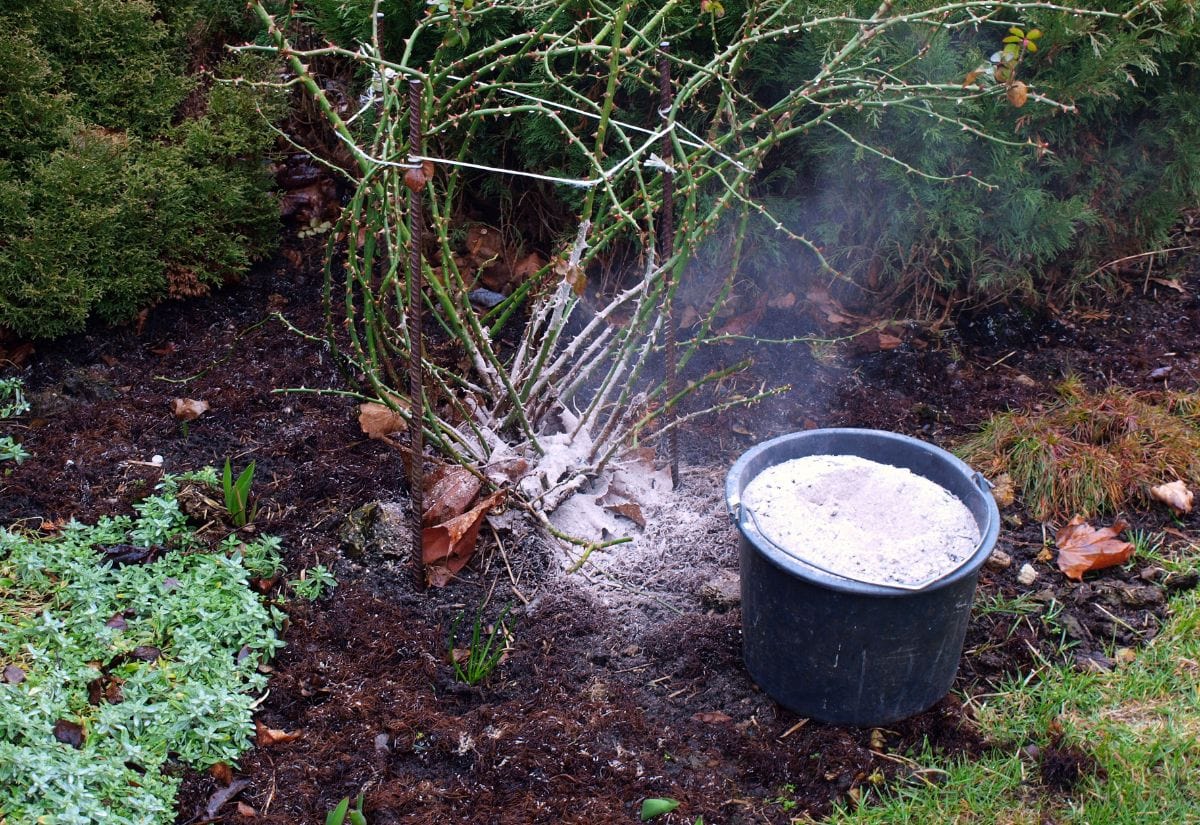
We all know that plants need nitrogen, phosphorus, and potassium, but what about those other essential nutrients that keep plants thriving at a cellular level?
Calcium is a crucial secondary macronutrient that strengthens plant cell walls, improves plant vigor, and helps create stable soil structure.
Calcium deficiency may manifest as yellow and brown spots on leaves, blossom end rot on tomatoes, slow growth, or poor soil structure.
To determine if your soil needs calcium, have your soil tested or use an at-home pH test to determine calcium levels.
Then, you can choose from a variety of calcium fertilizers like lime, gypsum, wood ash, bone meal, and eggshells to add to your soil and support your plants.
These are best applied in the winter or early spring before planting your garden, but they can also be side dressed during the growing season. Let’s dig into the details of why and how to add calcium to soil in your garden.
Stop Ignoring Your Soil’s Calcium – Here’s Why It’s a Game-Changer!
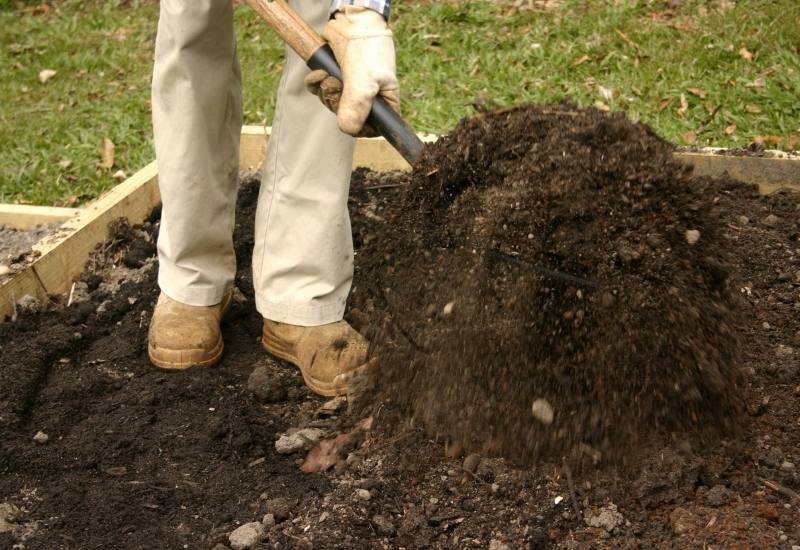
Calcium is an essential plant nutrient required for growing cell walls and root tips of all common garden crops.
In the ground, calcium helps with soil structure and affects how other minerals move around in the soil and if they can be absorbed by your plants. Calcium is also crucial for plant cell walls and seed formation.
Many acidic soils (pH less than 5.5) are deficient in calcium due to low levels of organic matter, heavy rains that leach out nutrients, or poor soil structure.
But that doesn’t necessarily mean you should go dump calcium in your garden. Too much calcium can also cause problems like a buildup of salts or too much alkalinity (high pH) that inhibits absorption of other plant nutrients.
You need a happy medium of around 400-8,000 ppm (depending on the test type) of calcium and a pH between 6.0 and 7.0 for most vegetable crops.
Most experts suggest a pH of 6.5 is ideal for nutrient absorption in vegetables. In order to get the ideal amount of calcium in your soil, you need to observe your plants and use a soil pH test to amend accordingly.
Signs of Calcium Deficiency In plants
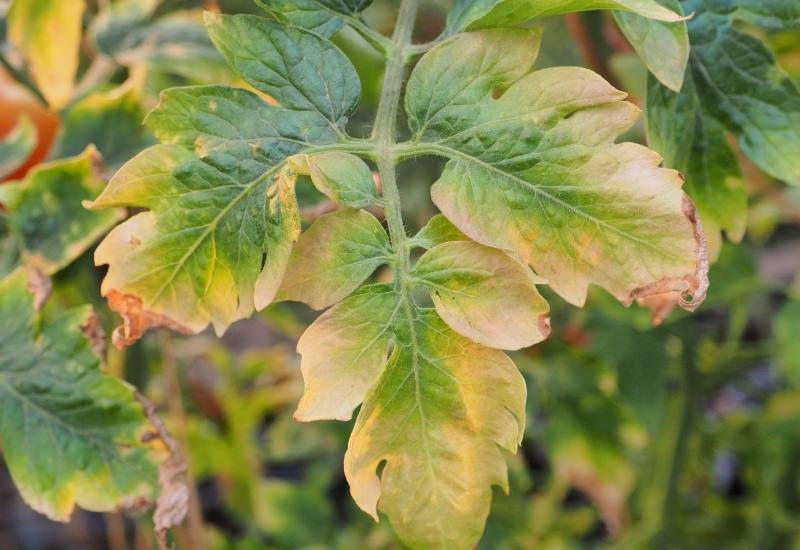
If a plant isn’t getting enough calcium, the youngest leaves will show damage first. They may look slightly deformed or have dead growing tips. Calcium deficient roots may rot in the ground or have stunted, shortened growth.
Blossom end rot on tomatoes and peppers is also a common sign of calcium deficiency. This looks like black, rotten, leathery lesions on the bottom of the fruits.
This is not a disease or pest, but rather a sign of nutrient deficiency that can be fixed by adding calcium.
In legumes, calcium deficiency may manifest as rotten pods or low levels of nitrogen fixation (not many root nodules). In other vegetables, the plants may simply be stunted and sad-looking.
Their roots lack the strength to push through the soil and their leaves don’t have enough calcium to form proper cell structure for new growth.
In summary, the symptoms of low calcium levels include:
While these are all telltale signs of a calcium issue, it’s best to also get a soil test to determine the levels of calcium in your garden.
What Causes Calcium Deficiency?
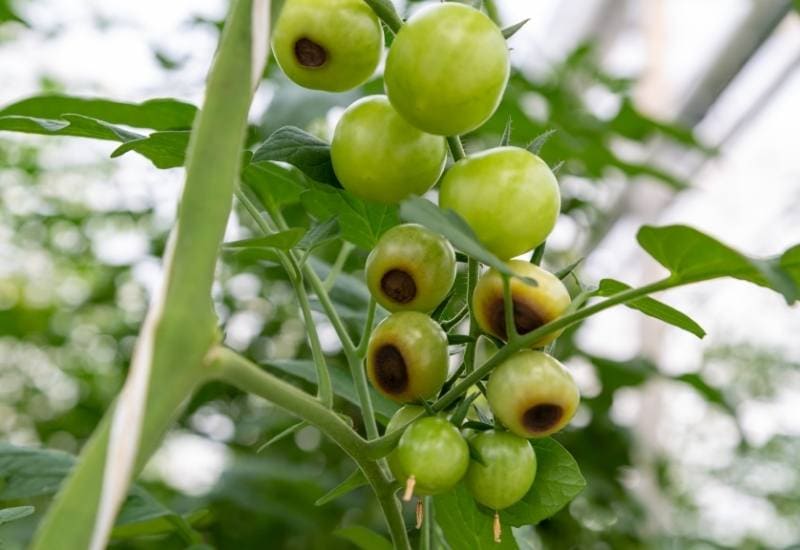
Certain regions are more likely to have calcium deficiencies than others. Acidic soils that are low in organic matter tend to be lacking in calcium.
The eastern and northwestern parts of the United States also tend to have more issues with calcium leaching due to high levels of rainfall and acidic soils.
On the other hand, loamy soils with high levels of organic matter should hold onto calcium just fine.
Regions with lots of natural limestone, gypsum, apatite, or coral and marine shells also tend to have calcium-rich soils.
So low pH, low organic matter, and high rainfall may all be linked to calcium deficiencies. Overuse of synthetic fertilizers (which cause a buildup of salts in the soil) as well as excessive tillage can also cause soil degradation and loss of calcium.
Ultimately, plants need calcium from soils that are rich in organic-matter, moderately alkaline (pH between 6.0 and 7.0), and have a high Cation Exchange Capacity (CEC).
Calcium is a cation, which is a molecule with a positive charge. The CEC is determined by the amount of clay (negatively charged) and organic matter (also negatively charged) in the soil.
Because of their opposite charges, soil particles with a higher CEC basically act like a magnet for calcium and hold onto it so it doesn’t leach away with water.
Along with plenty of healthy microbial activity in the soil, a high CEC from clay and organic matter can make it easier for plants to uptake the calcium.
Sandy soils with low organic matter tend to have a low CEC, which means less calcium availability.
There are many ways to add calcium to your soil, but that doesn’t necessarily mean it will become available to your plants.
High quality compost, mulching, and aerating your soil are important steps to make sure the calcium sticks around.
When to Add Calcium to Soil
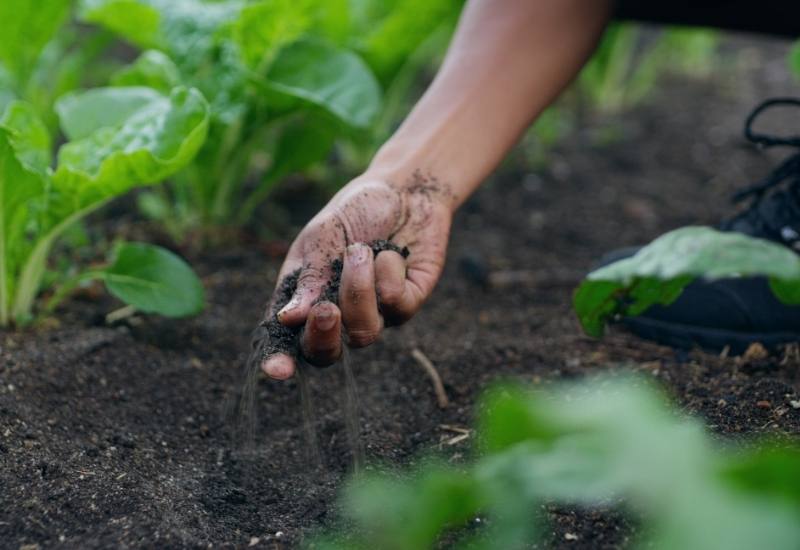
If you are noticing signs of deficiencies and/or you used a home soil pH test to determine that your soil is too acidic (pH below 5.5), you should probably add calcium to your garden.
It is also recommended that you submit a soil sample to your local university’s extension service for a full panel soil test.
However, an alkaline pH or optimum calcium levels on a soil test unfortunately doesn’t mean your problem will be fixed.
Like we mentioned above, just because there is calcium present in the soil does not mean it is actually getting absorbed by your plants.
This problem goes back to the Cation Exchange Capacity (CEC). A professional soil test will also tell you the CEC of your soil and help you determine if you need to add organic matter to improve the CEC.
In general, most agricultural soils are lacking in organic matter. A combination of adjusting the pH and incorporating high quality compost will improve the CEC and increase the availability of calcium to your vegetables.
Compost and calcium amendments are best added in late fall or early spring before planting, but they can also be side dressed for growing plants at any time during the season.
Ways to Add Calcium to Soil
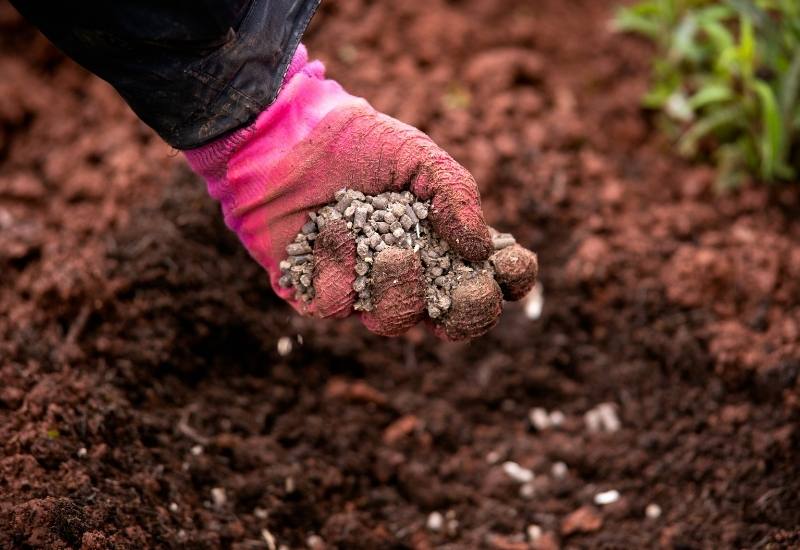
Different calcium inputs have different uses in the garden. For example, if your soil is too acidic and you need to raise the pH, it is best to use lime. Whereas if you need to keep your soil pH stable, you should choose gypsum.
In a pinch, you can opt for a foliar application of a quick-release calcium fertilizer, but it won’t balance your soil nutrition in the long run.
You can also use organic amendments like bone meal and eggshells to boost calcium in the garden.
Determining which one is best for you ultimately comes down to your garden’s specific soil composition, pH, and the type of plants you are growing.
Quick-Release Calcium
Foliar Spray
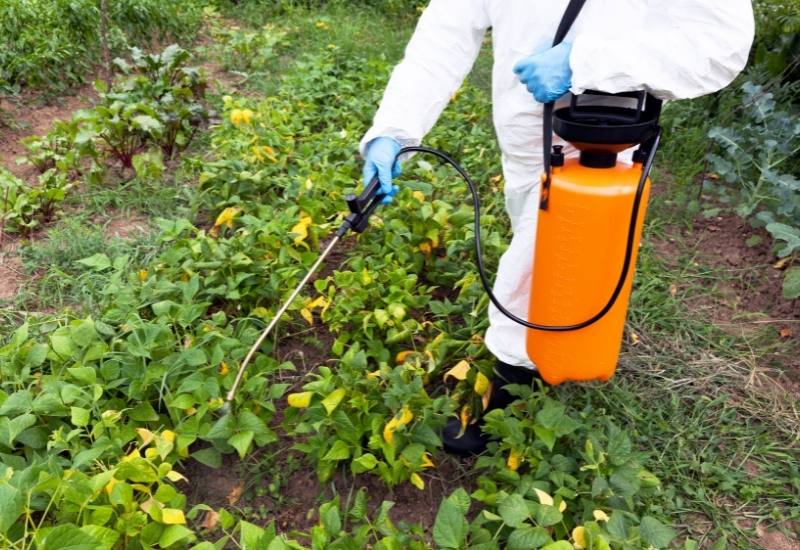
Synthetic commercial calcium is available in the form of calcium acetate, calcium chloride, and calcium nitrate.
These sprays are the fastest remedy for sudden calcium deficiency symptoms, but keep in mind that they will not have any long-term effect on your soil calcium levels.
Commonly used in greenhouses for seedlings and potted plants, foliar calcium sprays can be found at most garden stores and are used directly on the leaves in acute deficiency scenarios.
Supplementation with another calcium fertilizer will be needed to fix the deficiency moving forward.
Gypsum
Also known as calcium sulfate, this fast-acting amendment will help improve plant available calcium. Gypsum is a mineral mined from sedimentary deposits in areas of the midwest and southern United States.
Gypsum has a low CEC and will neither lower nor raise your soil pH. Generally, around 2 to 3 pounds of gypsum per 100 square feet of garden space is recommended.
It only needs to be applied once every 1-3 years. It’s best to consult with your local extension agency to determine the best amount for your specific region.
Long-Term Calcium Fertilizers
Agricultural Lime
No, not the citrus. This is calcium carbonate, a form of lime from mined limestone. Lime is one of the biggest calcium boosters that also raises the soil pH (making it more alkaline). You can use a lime calculator to determine how much you need in your garden.
Dolomite Lime
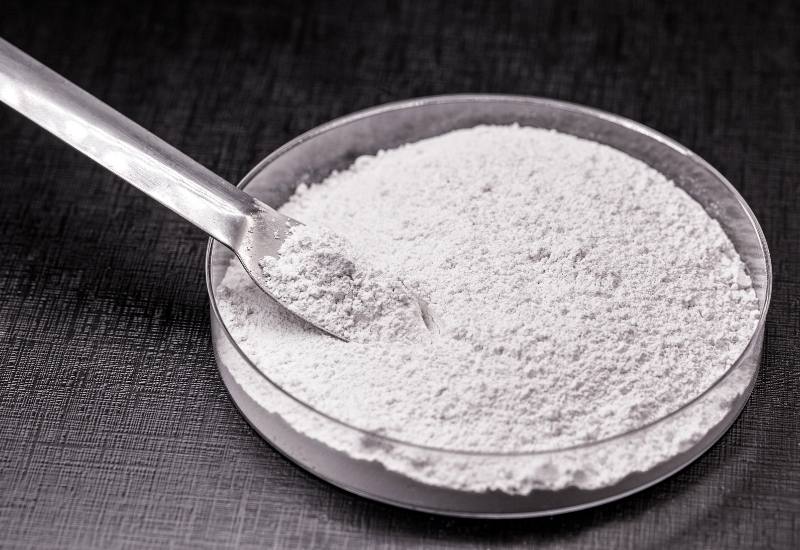
This is another form of calcium carbonate that also has magnesium carbonate in it. This will raise the soil pH as well as magnesium levels. If your soil test indicates that your soil already has high magnesium levels, it’s best to avoid dolomitic lime.
Soft Rock or Rock Phosphate
This slow-release calcium is a longer-term solution than lime that moderately raises the pH. Rock phosphate is a source of phosphorus and calcium oxide that is mined from clay and sedimentary rock deposits. You can apply at a rate of around 2.5-5 lbs per 100 square feet of garden area.
Organic Calcium Amendments For Your Garden
Ground Oyster Shells
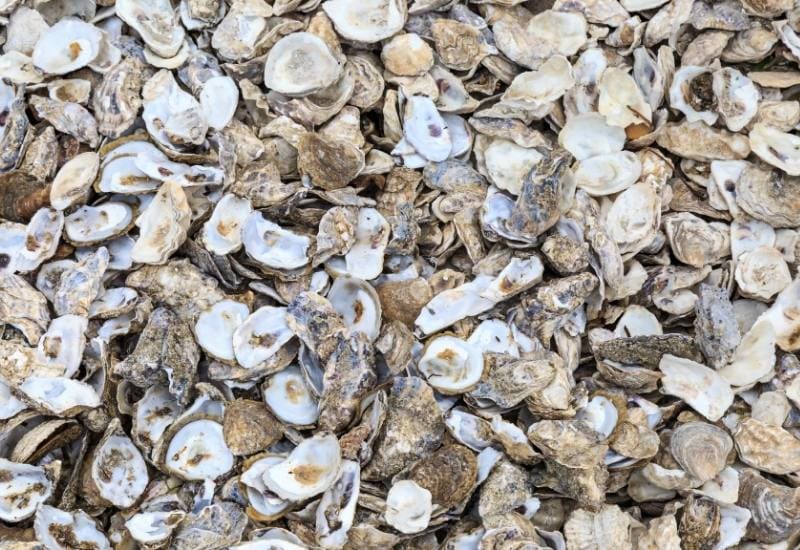
Anyone living by the sea knows that shells are a great source of natural calcium. For soils far from the ocean, a calcium deficiency can be remedied with a ground oyster shell (calcium carbonate) amendment.
This is a long-term solution of slow-release calcium that will add organic matter and fuel soil microbes.
It becomes soluble in the soil very slowly over time and may slightly raise the pH. This is one of the most sustainable options because the shells are a natural byproduct of the oyster industry.
Wood Ash
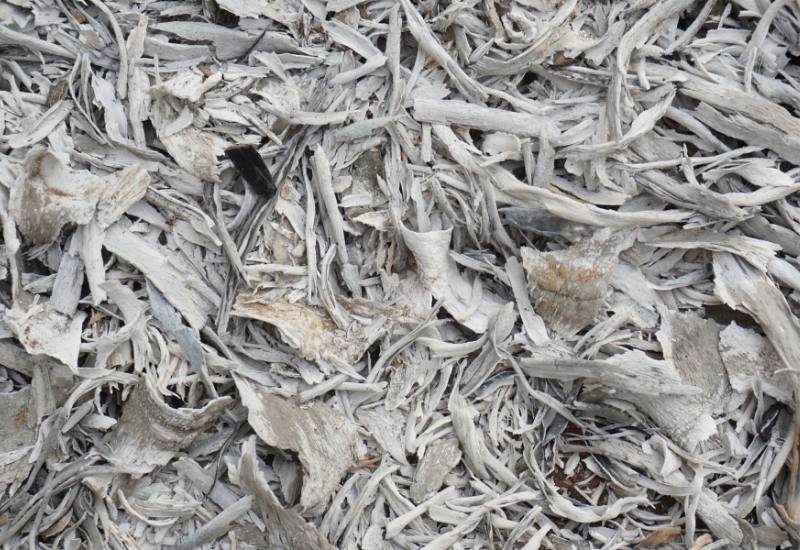
The old-school way of adding calcium to gardens was simply with ash from fires. Hardwood ash is the best for this purpose and softwood ashes should be avoided. Wood ash will add a lot of calcium to the soil while also raising the pH.
Bone Meal
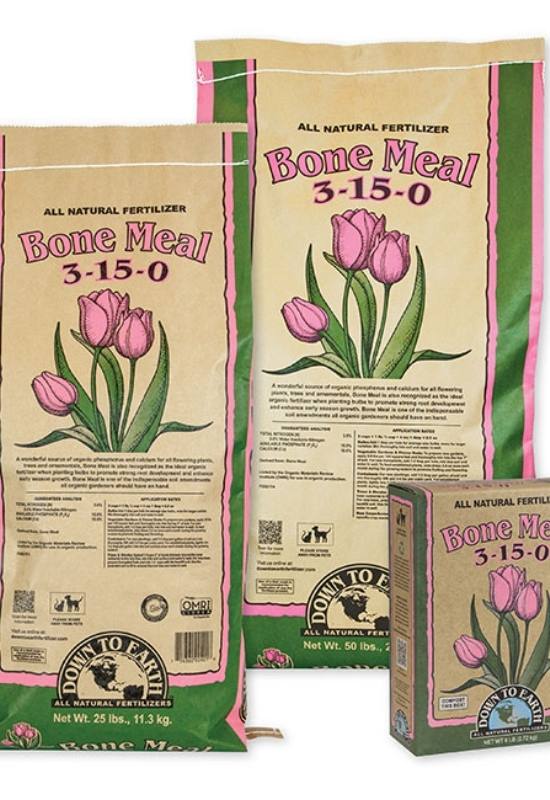
Bone meal is another all organic calcium source that is also high in natural phosphorus. Like most organic fertilizers, it is slow-release and will amend your soil for long-term nutrition.
Bone meal increases calcium, moderately raises the pH and is especially helpful for root crops and bulb flowers. It also has some nitrogen and plenty of phosphorus to promote root development and high quality fruits and flowers.
Egg Shells
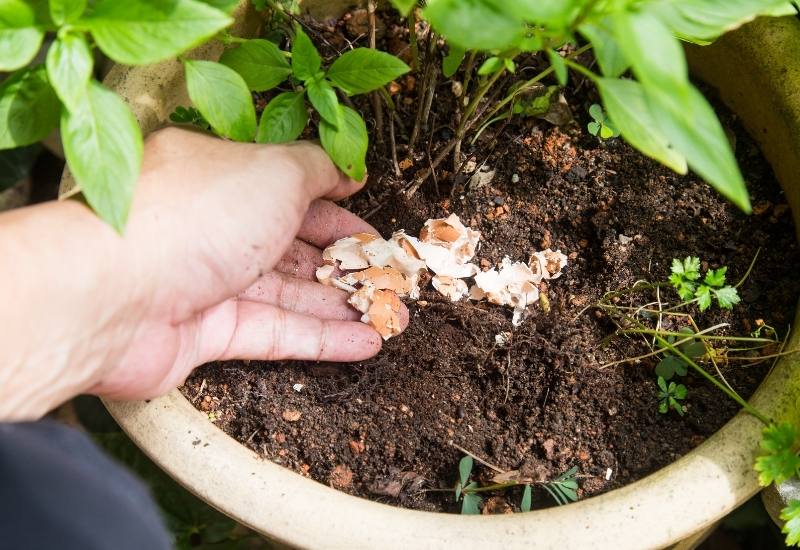
Last but not least, egg shells are an old-school solution to garden calcium issues. Unlike the other options, you can add eggshells to your garden straight from the kitchen.
When they are ground or crumbled up, soil microbes can decompose them more quickly and make the calcium available to your plants faster.
Eggshells are also a great additional source of organic matter that can be incorporated into compost or directly into garden soil.

Written By
Amber Noyes
Amber Noyes was born and raised in a suburban California town, San Mateo. She holds a master’s degree in horticulture from the University of California as well as a BS in Biology from the University of San Francisco. With experience working on an organic farm, water conservation research, farmers’ markets, and plant nursery, she understands what makes plants thrive and how we can better understand the connection between microclimate and plant health. When she’s not on the land, Amber loves informing people of new ideas/things related to gardening, especially organic gardening, houseplants, and growing plants in a small space.
